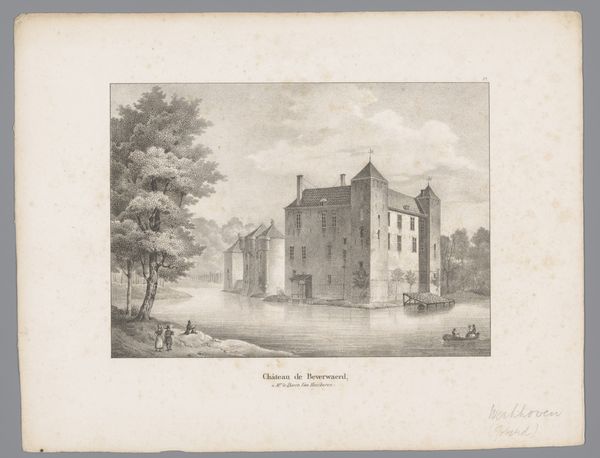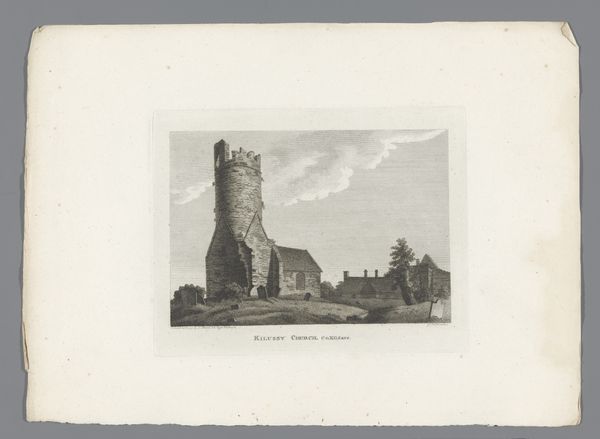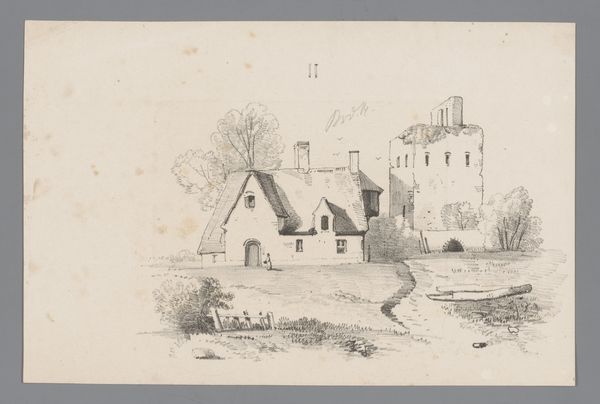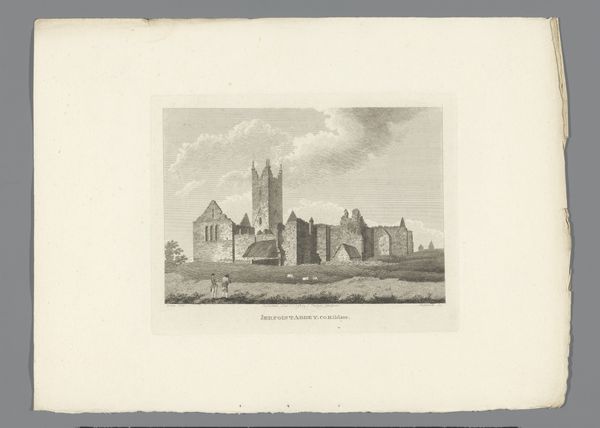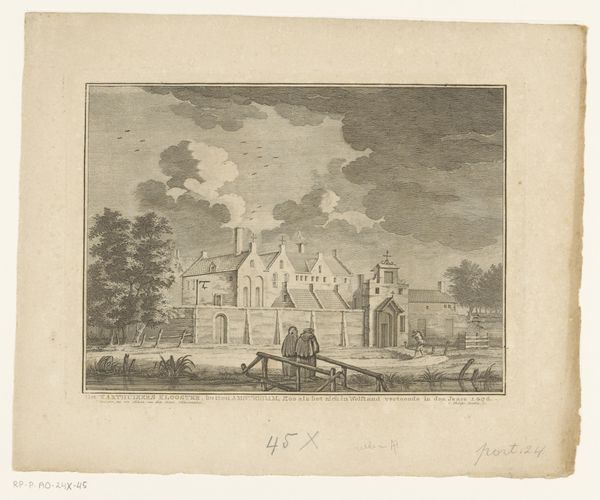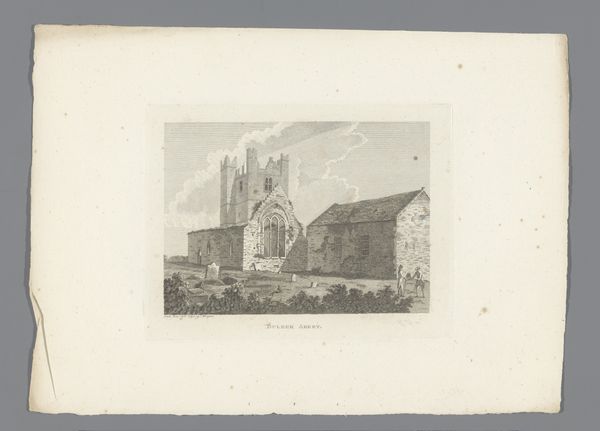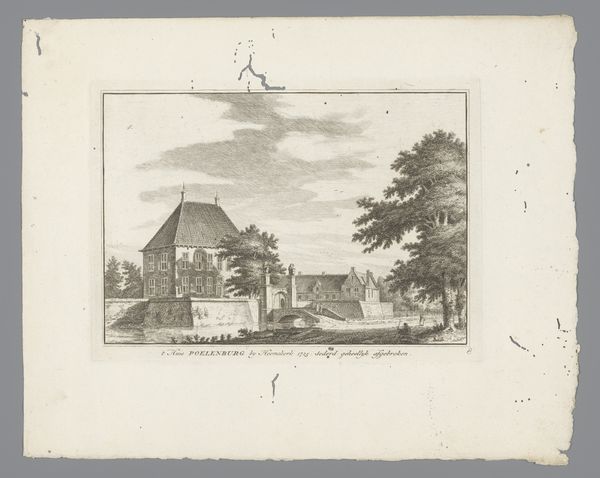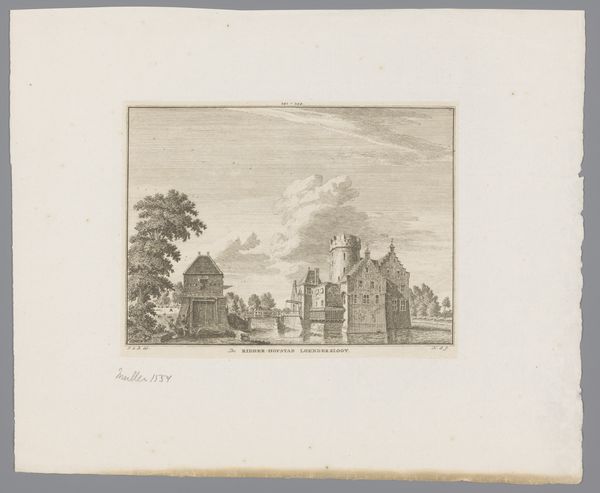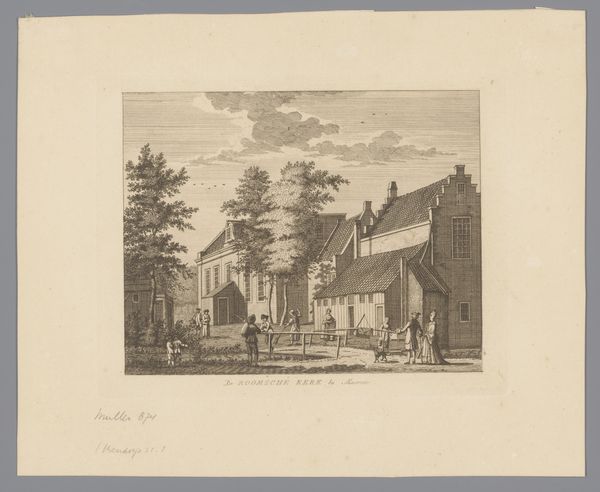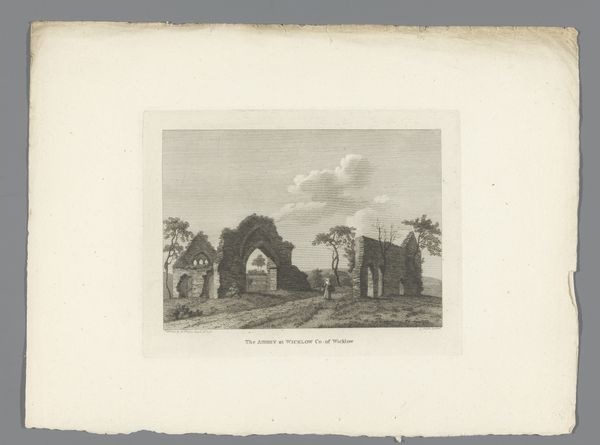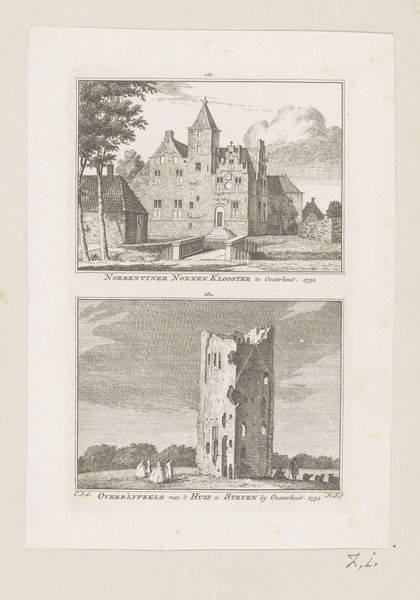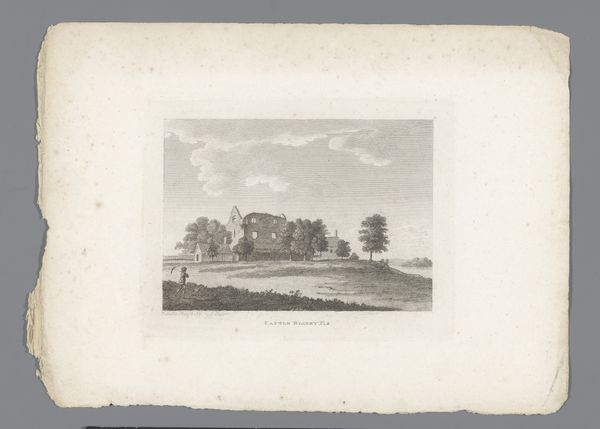
print, paper, engraving
# print
#
landscape
#
paper
#
romanticism
#
history-painting
#
engraving
Dimensions: height 164 mm, width 206 mm
Copyright: Rijks Museum: Open Domain
Curator: Here we have an anonymous engraving dating from perhaps 1791 to 1793, titled "Gezicht op de ruïnes van Blaney Castle." It resides in the collection of the Rijksmuseum. Editor: It immediately strikes me as something rather bleak, almost post-apocalyptic despite the very domestic, charming Romantic landscape style. The detail in the ruins contrasts starkly with the smoothed out and nearly cloudless sky. Curator: Indeed, the ruined castle stands as a potent symbol of time's relentless march, a theme central to Romanticism's fascination with ruins. Note how the artist, though unknown to us, carefully rendered the crumbling stonework and gaping windows as signs of decay, of lost glory. The castle acts as a vessel for history, filled with echoes. Editor: I wonder, given its existence as an engraving on paper, about its potential for mass distribution and consumption at the time. How accessible would such imagery have been? Was it a form of accessible picturesque tourism via print? Curator: It's likely such prints served as souvenirs or reminders of places visited or yearned for. Consider how the ruin would have been regarded: not just as a pile of old stones, but as a signifier of history, identity, and perhaps even moral lessons about the transience of power. Blaney Castle becomes almost a stage for contemplation of these big ideas. Editor: Right, but what did its production and circulation really *mean* for how the public at large perceived these grand structures? Was it about memorializing old construction, the labor of anonymous workers fading with time, reduced to mere picture planes for consumers? Or perhaps celebrating technological and chemical expertise required for reproduction? Curator: It's about how that past continually haunts and shapes the present. Look at the figures in the foreground, seemingly oblivious to the grandeur of the ruin; life continues, even amongst these monumental relics of former eras, suggesting a cycle of decay and renewal. Editor: Still, these sorts of prints often mask or entirely omit the messy industrial means through which they are constructed and traded. A lovely image can also act as great propaganda! Curator: A fitting, perhaps unresolved point for reflection. This delicate engraving contains multitudes, layers of meaning embedded within its lines and tones. Editor: Indeed, it encourages considering art as more than what meets the eye, asking instead, "What facilitated it, and what did it facilitate?"
Comments
No comments
Be the first to comment and join the conversation on the ultimate creative platform.
